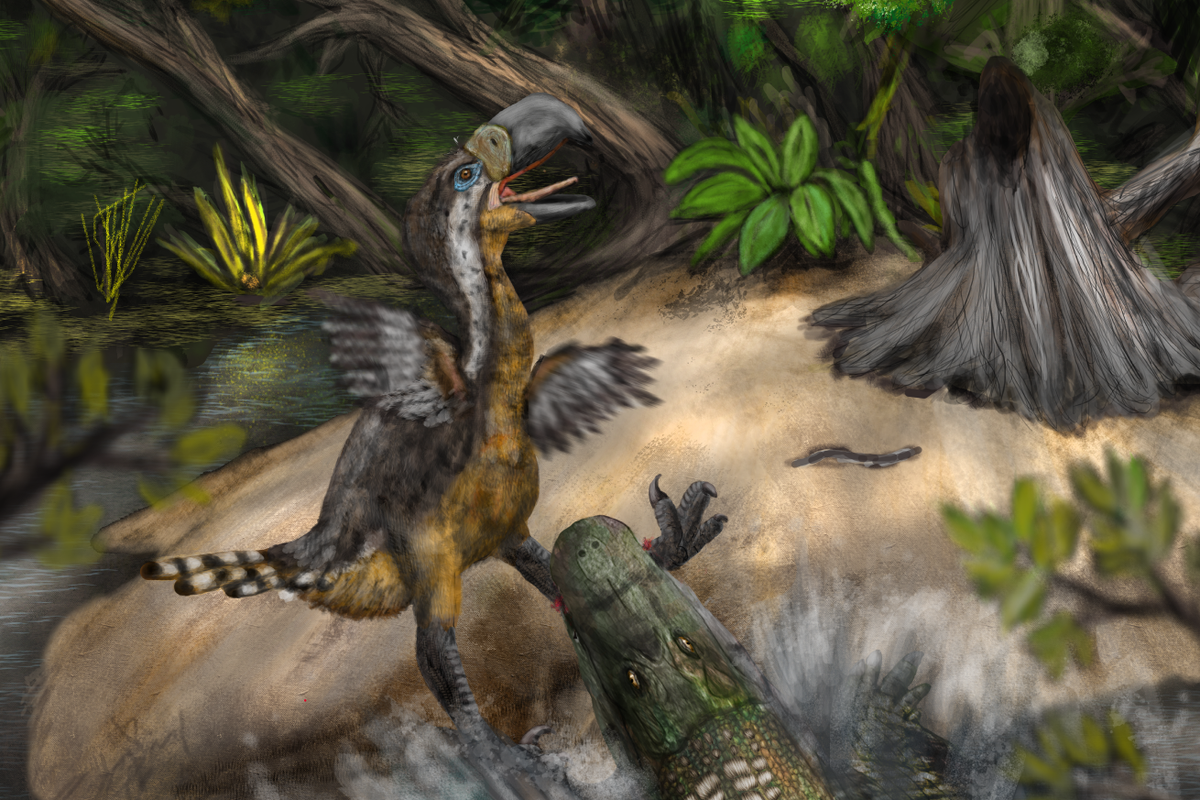
Teeth marks seen on the leg bone of a so-called ‘terror bird’, which were predators 13 million years ago, suggest it may have been killed by an even bigger reptile.
The enormous, flightless birds were found in the Americas and could reach up to 3 metres tall. They had powerful legs and vicious beaks which could tear the flesh of its prey.
In a fossilised leg bone of one of the huge birds, four deep teeth marks have been discovered, prompting professor Andrés Link of the University of the Andes in Colombia to search for what might have been the bird’s killer. Researchers now believe it was a caiman.
“Terror birds were undoubtedly at the top of the food chain,” says Prof Link in the study published by journal Biology Letters.
“But this evidence shows us that they could also fall as prey of large caimans when approaching large water bodies. Maybe they went there to look for prey or [were] moving across this complex ecosystem.”
Using 3D scan of the bites, scientists were also able to reconstruct the possible battle between the terror bird and another reptile – a battle the bird appears to have lost.
To discover which animal might have killed the terror bird, scientists created a digital model of the tooth marks by scanning the surface of the fossil, which they then compared with the teeth of ancient predators from the region.
“There’s no evidence of gnawing and the marks are rounded and in [a] line, more similar to those inflicted by crocodiles and caimans,” professor Link said, with the scientist ruling that it was unlikely to be a mammal behind the attack.
The bones, which were first found more than 15 years ago in Colombia’s Tatacoa Desert, provide rare evidence of an interaction between two of the top predators on the continent 13 million years ago.
But the research team notes that they can’t rule out the possibility that the bird was already dead at the time it was apprehended by the caiman, and that the tooth marks could be evidence of scavenging by the reptile.
“There is no sign of healing in the bite marks on the bone,” explained professor Link. “So if it wasn’t already dead, it died in the attack. That was the last day that bird was on this planet – then a piece of its leg bone was found 13 million years later.”
These types of tooth traces are “more common than people think”, said Carolina Acosta Hospitaleche of the National University of La Plata in Argentina. Last year, she discovered tooth marks on a smaller and older terror bird fossil, around 43 million years old, from Argentina.
